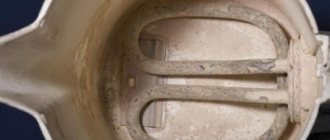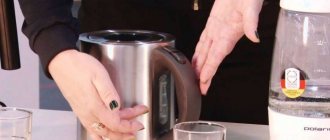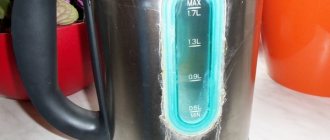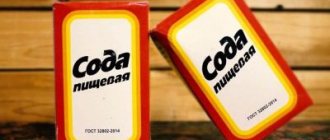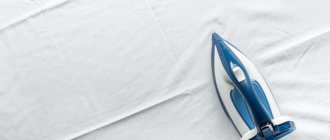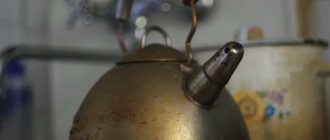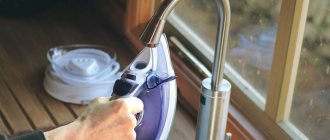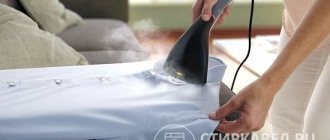Each of us uses a kettle every day to get hot water, especially when making coffee or tea. Therefore, it is not surprising that over time the amount of dirt that remains on the bottom and on the inside of the device increases.
Kitchen appliances made from borosilicate glass are extremely resistant to high temperatures. Their advantage is the fact that they do not absorb odors and are ideal heat insulators. In addition, they are unique in their design.
Glass teapots are certainly a wonderful choice of elegance as long as they are properly cleared of sediment. Unfortunately, along with traditional metal or aluminum containers, they are susceptible to hard water, which contains minerals such as calcium that settle on the sides of the container when boiling. They form a white coating, which over time not only spoils the taste of drinks, but also shortens the performance of the device itself.
Vinegar
Table vinegar is a common means of descaling glass teapots. It is a mixture of vinegar essence and water. Completely non-toxic, completely harmless and antibacterial - it is actually beneficial to use on any surface. It not only fights scale well, but also kills germs.
The acidic composition acts quickly enough against calcified deposits on transparent surfaces, so it can effectively remove scale from a glass kettle. Cleaning with vinegar is not a complicated process that anyone can handle.
- Pour the liquid out of the device.
- Pour a mixture of water and vinegar into the kettle in equal proportions and bring to a boil.
- Leave in the container for two hours.
- Pour it out and clean the remaining residue with a damp sponge.
As an alternative cleaning, you can use apple cider vinegar at a rate of 1 part liquid to 4 parts water. Heat a glass teapot and let it create steam for a few minutes. Then allow the liquid to cool to room temperature. Afterwards, carefully inspect the walls of the device for the presence of scale, repeat the procedure if necessary.
Cleaning the kettle with household chemicals
Chemicals help remove white deposits from the device:
| Name | Form | Application | Effect |
| Antiscale | Powder | Powder is poured into water and boiled | Quick descaling |
| Un Momento | Liquid concentrate | Dilute with water and heat | Regular use as a preventive measure |
| Anti-scale agent Un Moment | 10 ml concentrate ampoules | The contents of the ampoule are added to water and the solution is heated | High-quality cleaning of internal surfaces without damaging parts |
| Glutoclean | Concentrated gel | Cleaning without boiling - wipe with gel from the inside | Removing old salt deposits |
| Cillit | Gel | Washing without boiling | Provides antibacterial protection, prevents salt deposition for 7 days |
| Frau Schmidt | Pills | For boiling, dissolve in water | Plaque removal |
| Topper | Gel concentrate | Flushing from the inside | Removing old plaque |
Vinegar and baking soda
- Pour fresh water mixed with two tablespoons of vinegar and two tablespoons of baking soda into a container. Fill it to the maximum level.
- Boil the mixture for about half an hour.
- Refrigerate.
- Use a soft sponge to remove any remaining limescale. Avoid using abrasive objects as they may scratch the glass.
- Rinse your glass teapot several times to avoid a vinegary taste in your tea.
Tips for use
Sooner or later, scale forms in any kettle. But in order for it to appear later or in smaller quantities, it is important to take a number of preventive measures. These include:
- regular prevention – once every 30 days;
- For boiling, use only clean filtered water;
- Do not leave water in the kettle for storage, but pour it out after use;
- take exactly as much water as is necessary for preparing certain products.
Proper use of cookware will help increase its lifespan and reduce energy consumption.
Lemon acid
Lemon is not only an excellent cosmetic product, but is also very effective as a descaling agent. The acid it contains perfectly dissolves calcium carbonate without the use of harsh and toxic chemicals. Next, let's talk about how to remove scale with citric acid.
It is recommended to use in the following proportions:
- 1-1.5 tablespoons of citric acid for every liter of water;
- juice of one lemon for one teapot;
- slices of one lemon per container.
After boiling, clean the tank, fill it with fresh liquid and rinse thoroughly. Boil the water again and pour it into the sink.
An alternative is lemon essential oil. Add 20 drops of oil to two glasses of water, spray thoroughly inside the glass teapot and leave for a few minutes before brushing with a soft toothbrush.
What to do if plaque does not come off
If traditional methods and chemical compounds are powerless, clean the bowl with 3 components - soda, citric acid, vinegar.
Description of the procedure:
- pour 7 g of soda into a filled kettle;
- heat the liquid and disconnect the device from the network;
- after half an hour, pour out the used solution and rinse the container;
- pour water to the top mark and add 50 g of lemon;
- boil and stand for half an hour;
- the liquid from the device is poured out and the bowl is filled with fresh water with the addition of 120 ml of vinegar;
- After boiling, turn it off and pour out the solution after 40 minutes.
Often cleaning with 3 products is not recommended - manufacturers warn that the use of acids provokes leaks.
Carbonated drinks
Many housewives have long heard about how to descale a glass teapot using carbonated drinks, and some have put their knowledge into practice. Indeed, the composition of such liquids copes well with light precipitation.
For a glass teapot, it is better to use a transparent sprite, since it will not leave dark marks, unlike Coca-Cola. A glass of drink is poured into the container and filled with water, the mixture is boiled for 15 minutes and poured out. The device itself is thoroughly washed and cleaned of scale residues.
Anti-scale products
There are several ways to clean and descale a glass teapot. You can use chemicals or traditional methods, which are good because they are safe, plus similar cleaning substances are available in every kitchen. Let's take a closer look.
Vinegar
This is a proven, effective, completely safe way to clean a glass teapot from scale. In addition, it has an antibacterial effect. So the microbes will have a hard time.
How to proceed:
- Pour equal parts water and vinegar into a container.
- Boil this solution.
- Leave everything inside for 2 hours.
- Pour out the liquid and clean off any remaining plaque with a sponge. You need to wash it carefully.
- If necessary, the procedure can be repeated.
- After cleaning, boil clean water a couple more times and drain.
Lemon acid
Another simple and effective way to get rid of plaque is citric acid. This method is suitable for any type of cookware. It is even believed that cleaning with citric acid is more effective than vinegar:
- Pour water into the device, add citric acid. For 1 liter there are 2-3 teaspoons of citric acid.
- Boil the liquid.
- Leave until completely cool.
- Drain off the cleaning agent and remove any softened residue with a sponge.
- Boil the water in the device several times and drain before using it.
Important! Citric acid can be replaced with lemon juice. Just squeeze one citrus fruit into a bowl of water.
Baking soda
Cleaning with soda is done as follows:
- Dissolve baking soda in hot water and pour into a container.
- Leave for 15 minutes, then boil.
- Wait until the liquid cools down.
- Rinse kitchen utensils thoroughly to remove any remaining cleaning product and scale.
Soda and vinegar
How else can you clean a glass teapot? You can clean the device with a mixture of soda and vinegar:
- Dissolve 2 tablespoons of vinegar and 2 tablespoons of soda in water.
- Pour this mixture into the device to the maximum mark.
- Boil the liquid several times and leave to cool.
- Drain the solution. Use a soft sponge to remove any remaining plaque.
- Rinse the inside of the vessel well under running water.
Lemon and vinegar
You can get rid of plaque inside the vessel by mixing lemon and vinegar:
- Dissolve 2 tablespoons of lemon juice or citric acid and 2 tablespoons of vinegar in 1 liter of liquid.
- Pour the mixture into the device.
- Boil this solution several times.
- Drain the liquid and clean the device with a sponge.
- Rinse well.
Lemon and soda
The combination of lemon juice and baking soda will give a good result in the fight against plaque from excessively hard tap water. This mixture will degrease and remove deposits, leaving behind a pleasant lemon smell.
Boil water several times with 2 tablespoons of lemon juice and 2 tablespoons of baking soda.
Carbonated drinks
Strange as it may sound, you can clean limescale using carbonated drinks. For glass electric kettles, Sprite is better suited, since colored drinks, for example, Coca-Cola, can leave marks on the walls.
Pour one glass of lemonade into a container and fill it with water. Boil this mixture several times, drain and clean off any remaining plaque with a sponge.
Important! If the coating is very strong, there is no need to dilute with water - fill the container ⅔ full with soda only.
Other non-standard cleaning methods
What people come up with and what they use to clean their dishes from harmful scale:
- Pour the cucumber brine into the container and bring to a boil several times. In fact, the method is effective, since the product is nothing more than a concentrated saline solution.
- Place the washed apple or potato peels in a container, add a little salt and fill with water. Boil water along with the cleaning agents and leave everything until the liquid cools. Then all you have to do is clean off any remaining plaque with a sponge and rinse the device thoroughly. This is also a completely understandable option, since apples contain natural active acids, and potatoes contain starch. Both are capable of removing contaminants of various origins, including scale.
Kalgon
Among the chemical agents for combating lime and salt deposits on glass electric kettles, Calgon is best suited. This product for dishwashers and washing machines with a unique composition will come in handy. One package will last you a long time.
In order to remove scale with Calgon, you need to dilute 1 teaspoon of the product in 3 liters of water and boil it all in a vessel with scale. After this, removing the remaining plaque will not be difficult.
Important! After this, it is advisable to boil the water in the vessel several times and drain it. After this, the device can be used.
Cucumber pickle
For the delicate texture of glass, cucumber pickle is suitable for descaling. Pour it into the kettle and boil for a couple of minutes.
Tips to help extend the life of glass teapots:
- Never leave water in the container and empty it after each use.
- Clean the kettle regularly with vinegar or lemon, at least once a month.
- Leave the kitchen appliance dry after use.
A clean glass teapot saves money:
- in order to boil a liquid in a container full of scale, much more energy is needed;
- Prepare only the required amount of boiling water - this way you can save a lot of time, water and energy.
Hard water itself is not a problem, but when it is heated to at least 550C, the minerals it contains form rocky, off-white deposits, clogging the inside walls of clear glass teapots.
This must be constantly combated in order to obtain high-quality boiling water and extend the service life of the tank. As you can see, these methods are somewhat different from removal in a stainless steel kettle.
How to wash a kettle before first use
A new kettle with a glass body should be thoroughly rinsed before use. Use homemade or store-bought dishwashing detergents. Then the device is rinsed and water is filled into the container. The water level must reach the permitted level, but not exceed it.
Close the lid and connect the kettle to the network. After boiling, leave for a quarter of an hour and drain the cooled water. Repeat boiling 2-3 times, each time filling the device with fresh water.
Sometimes a new glass appliance has an unpleasant odor. A characteristic smell appears if the kettle has been tightly closed for a long time - the air inside the case has stagnated. After preparing the bowl for use, the foreign aroma disappears.
If for some reason the smell continues to bother you, activated carbon will help get rid of it. Place 8-10 absorbent tablets into the container, close the kettle and wrap the device with a clean cloth on top. After a day, the container is washed and the water is heated a couple of times - the unpleasant odor will no longer appear.
Preventive actions
Before you figure out how to remove scale from a kettle, you need to touch on several preventive rules. Following these simple recommendations will protect the walls and bottom of the cookware from the formation of a hardened layer. Remember the four secrets of proper operation of the kettle.
- Water filtering. It is highly undesirable to use water flowing from a tap. It contains many additives that provide a long-lasting coating. To protect kettles from scale formation, experts recommend using purified water or installing a special filter.
- One-time boiling. Try to pour a little water so as not to boil it again. It is recommended to simply pour out any excess liquid remaining in the kettle.
- Washing the container. Before boiling and immediately after it, it is necessary to rinse the dishes. Sometimes you may see small "flakes" settling on the bottom and sides. This is lime, from which scale forms over time.
- Preventive cleansing. Periodically it is necessary to clean the kettle using any of the methods suggested below. The timing of prophylaxis depends entirely on the frequency of use.
